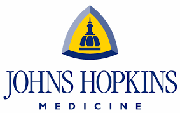HAUPTMENÜ
AWARDS
Forschergeist gefragt: 14. Novartis Oppenheim-Förderpreis für MS-Forschung ausgelobt
FernstudiumCheck Award: Deutschlands beliebteste Fernhochschule bleibt die SRH Fernhochschule
Vergabe der Wissenschaftspreise der Deutschen Hochdruckliga und der Deutschen Hypertoniestiftung
Den Patientenwillen auf der Intensivstation im Blick: Dr. Anna-Henrikje Seidlein…
Wissenschaft mit Auszeichnung: Herausragende Nachwuchsforscher auf der Jahrestagung der Deutschen…
VERANSTALTUNGEN
Wichtigster Kongress für Lungen- und Beatmungsmedizin ist erfolgreich gestartet
Virtuelle DGHO-Frühjahrstagungsreihe am 22.03. / 29.03. / 26.04.2023: Herausforderungen in…
Pneumologie-Kongress vom 29. März bis 1. April im Congress Center…
Die Hot Topics der Hirnforschung auf dem DGKN-Kongress für Klinische…
Deutscher Schmerz- und Palliativtag 2023 startet am 14.3.
DOC-CHECK LOGIN
Johns Hopkins physicians and engineers develop search for AI program that accurately predicts risk of „ICU delirium”
Machine learning model they designed shown to work in some ICU patients
Johns Hopkins Medicine (January 26, 2023) — More than one-third of all people admitted to the hospital, and as many as 80% of all patients in an intensive care unit (ICU), develop delirium, a type of brain dysfunction marked by sudden bouts of confusion, inattention, paranoia, or even agitation and hallucinations. An intensivist at Johns Hopkins Medicine, in collaboration with Johns Hopkins University engineering students, report they have developed artificial intelligence (AI) algorithms that can detect the early warning signs of delirium and can predict — at any time during an ICU stay — a high risk of delirium for a significant number of patients.
“Being able to differentiate between patients at low and high risk of delirium is incredibly important in the ICU because it enables us to devote more resources toward interventions in the high-risk population,” says Robert Stevens, M.D., associate professor of anesthesiology and critical care medicine at the Johns Hopkins University School of Medicine and senior author of the new study results, published in the Dec. 20 issue of the journal Anesthesiology. Stevens is also director of precision medicine and informatics, and co-director of the Johns Hopkins Precision Medicine Center of Excellence in Neurocritical Care.
Clinicians already knew that ICU delirium occurs more often in older and sicker patients, and that ICU patients who develop delirium are at higher risk of prolonged hospitalization, future dementia and death. Anti-delirium interventions such as care bundles, changing medications and earlier-than-usual occupational and physical therapy are effective, experts say, but limited time and resources, as well as the often unpredictable needs of ICU patients, prevent most ICUs from using them in every patient.
The new AI program, designed by undergraduate and master’s level engineering students in a precision medicine class taught by Stevens, applied AI algorithms to a publicly available dataset covering more than 200,000 ICU stays at 208 hospitals around the country.
“The underlying idea was that this routinely collected data stored in patients’ electronic health records contains signatures that are associated with delirium risk,” says Kirby Gong, a recent master’s degree graduate from the Johns Hopkins Department of Biomedical Engineering and first author of the new work.
Using the data, the team developed two computerized models to predict delirium risk. One, a so-called static model, takes a single snapshot of patient data shortly after admission — information about age, severity of illness, other diagnoses, physiologic variables and current medications — to predict delirium risk at any point during a hospital stay. The second, a so-called dynamic model, monitors information over hours and days, including repeat blood pressure, pulse and temperature readings — to provide the patient’s continuously updated risk of delirium over the coming 12 hours.
Once the researchers developed the AI models, they tested them on two other sets of data from a Boston hospital, collectively covering more than 100,000 ICU stays. The area under the receiver operating characteristic curve (95% CI) for the first 24-hour model was 0.785, meaning that it was able to predict which patients would get delirium 78.5% of the time. The dynamic model performed even better, predicting delirium-prone patients up to 90% of the time.
Stevens says he is now testing the models on historical patient data from Johns Hopkins Medicine ICUs, and plans to design a clinical trial to test the use of the algorithms — and how they could shape clinical care — in patients newly admitted to an ICU. His lab is also applying similar artificial intelligence approaches — often in collaboration with engineering students and faculty — to predict stroke, heart failure, pulmonary embolisms and other emergent events seen in critical care medicine.
“For a lot of these physiological transitions, we think that there are early warning signs that may not be obvious to a clinician but can be picked up on using the kinds of artificial intelligence-supported pattern analysis that we used here,” says Stevens.
In addition to Robert Stevens and Kirby Gong, other authors on the Anesthesiology paper are Akaash Sanyal, Joanna Guo, Han Kim, Hieu Nguyen, Joseph Greenstein and Raimond Winslow of Johns Hopkins;
Ryan Ly of Northwestern University; and Teya Bergamaschi of Massachusetts Institute of Technology.
The research was supported solely from institutional and/or departmental sources at The Johns Hopkins University.
Journal: Anesthesiology
DOI: 10.1097/ALN.0000000000004478
Johns Hopkins Medicine, 26.01.2023 (tB).
Schlagwörter: Anästhesiologie, Delir, Intensivmedizin


